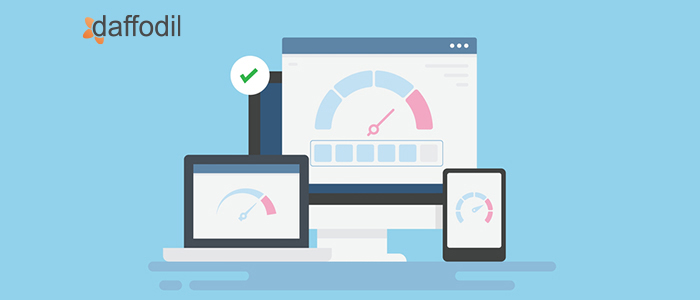
Every industry & organization is transforming itself digitally. In this process, they are taking their existing, offline userbase to an online platform. The best part is, these online platforms can capacitate as many users as a business want. But, there is a catch.
Before an online platform (website or mobile app) is bombarded with users, it should be prepared to manage the load, i.e., check if the functional behavior and performance of the application are the same on receiving concurrent load of users. This performance testing criterion, where system infrastructure is assessed for its ability to perform during peak hours is called load testing.
Load testing is often used interchangeably with performance testing. However, both of them have a different scope for analyzing the solution.
Performance testing is an umbrella term that checks for responsiveness, scalability, and stability of solutions. Load testing, on the other hand, is a subset of performance testing wherein a software solution is tested for its responsiveness when there is a concurrent load of users.
At Daffodil, load testing is one of the integral parts of the software performance testing cycle. Be it for a unicorn eCommerce portal or a lottery management system, our team has ensured that the apps are responsive during peak traffic hours.
Taking it from their experience, we have curated a list of 5 best practices that should be adopted during load testing. Let’s know more about them.
1. Paying Attention to the Load Profile
Load testing should always be performed on expected traffic loads to get realistic and productive output. Owing to seasonal/occasional events like sale, live sessions, etc., the spike in traffic can vary and can be handled accordingly. It is a good idea to create a list of factors that can help in creating a load profile. For example,
- Understand how many users are expected to arrive on the platform during peak traffic hours
- What effect does the load bring on the system and what metrics should be tracked?
- Evaluate how certain operations/processes affect the system
- Examine server and database activities
- Analyze days/hours when the load on operations is the highest
A load profile is a set of operations and their intensity, chosen in a way, that they create a load comparable to the production load. If the load profile is not efficiently created, it might lead to test results that are not related to production.
2. Preparing the Load Generator
A load generator is a system that is used to simulate load for performance testing. This system is responsible for sending virtual user requests (scripts that act like a real user). During a load test, simultaneous requests are sent to the application/system to assess if the behavior and performance of the system persist with concurrent users. Along with preparing the load generator to perform the load test, ascertain that this machine is not over-utilized.
3. Test Early & Test Often
In an Agile development environment, it is always a great idea to continuously test the application for its performance. These days, when continuous integration and deployment are an integral part of the development cycle, it is necessary that testing and DevOps practices go hand-in-hand.
DevTestOps, the combination of DevOps and Continuous Testing is a practice that ensures that software is tested early, often, and throughout the delivery pipeline. In a traditional scenario, the work is passed to the testers once the coding part is done. Thus, testing is usually done at a later stage in the development cycle, which often makes it a rushed activity.
When DevTestOps is practiced, automated tests are run to check the code's correctness and avoid any failures when the code is ready for production. Therefore, planning load testing with CI/CD pipeline can ensure better results for application performance.
4. Measure the Ramp Up & Ramp Down SpeedRamp-up speed helps the testers to analyze the speed at which new, concurrent users are accessing the application. Before an application reaches the peak of traffic, a concurrent load of users starts to join the platform. The speed at which users increase is the ramp-up time of a load test. Contrary to this, ramp-down time is the speed at which a load of concurrent users starts to lessen down in an application. Measuring the ramp up and ramp down speed helps to analyze which operations are highly affected by a load of users.
ALSO READ: 7 Best Tools for Load Testing (Open Source)
5. Optimizing the Scripts
Writing test cases that mimic real-world scenarios has a significant role in load testing an application. Along with generating scripts, it should be ensured that the scripts are not overloading the test tools. By analyzing factors such as time, duration of the run, amount of info logged, etc., the scripts used for testing can be optimized.
Want to Load Test your Application? Our Team can Help
A strategic approach to load testing is the key to rightly assessing the performance and behavior of the application. For almost every type of application, client-server apps, web apps, mobile apps, transactional apps, etc., Daffodil has been designing the right performance testing approach.
Our software testing services encompass almost every assistance that’s needed to manually examine an application or automate testing using scripts. The QA team shortlists the best tools for testing the application (that are performance-efficient and cost-effective as well). To understand the entire cycle of load testing an application, you can connect with our experts through a 30-minute consultation.



